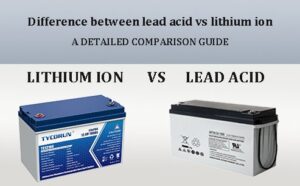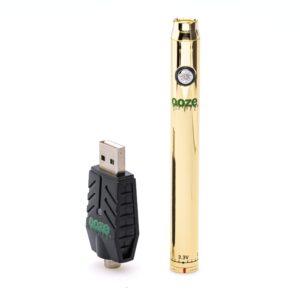How cold is too cold for lithium batteries? Can these powerful energy sources withstand freezing temperatures or do they lose their effectiveness? If you’ve ever wondered about the impact of cold weather on lithium batteries, you’re not alone. In this article, we’ll delve into the subject and explore the optimal temperature range for these batteries to ensure their longevity and performance. So, whether you’re an outdoor enthusiast planning a winter adventure or simply a curious individual, join us as we unlock the mysteries of how cold is too cold for lithium batteries.
How Cold is Too Cold for Lithium Batteries?
Lithium batteries have become the go-to power source for a wide range of applications, from smartphones and laptops to electric vehicles and renewable energy storage systems. These batteries offer numerous advantages such as high energy density, longer lifespan, and lower self-discharge rates compared to other battery chemistries. However, like any other battery technology, they are also influenced by external factors such as temperature.
In this article, we will delve into the impact of cold temperatures on lithium batteries and explore the question of how cold is too cold for these energy storage devices. We will cover various aspects such as their performance, safety, and long-term durability in low-temperature environments. By understanding these factors, you can make informed decisions about using lithium batteries in cold climates and ensure optimal performance and longevity.
The Effects of Cold Temperatures on Lithium Batteries
Lithium batteries consist of lithium-ion cells that contain an electrolyte and electrodes. The electrolyte allows ions to move between the electrodes during the charging and discharging process. When exposed to extreme cold temperatures, several effects can impact lithium batteries:
1. Reduced Capacity
Cold temperatures can significantly reduce the capacity of lithium batteries. This is primarily due to the slowed chemical reactions within the battery cells, decreasing the efficiency of energy transfer. The reduction in capacity means that the battery will not last as long on a single charge in colder climates compared to normal temperatures.
2. Increased Internal Resistance
Lower temperatures cause the internal resistance of a lithium battery to increase. The internal resistance determines how easily energy can be transferred within the battery during charging and discharging. With higher internal resistance, it becomes more challenging for the battery to deliver the necessary power to meet the demands of the device or system it powers.
3. Voltage Fluctuations
Cold temperatures cause voltage fluctuations in lithium batteries. This fluctuation can impact the accuracy of battery voltage readings, leading to potential issues with battery monitoring systems and inaccurate estimations of remaining battery life.
4. Reduced Charge Acceptance
Lithium batteries may struggle to accept a charge efficiently in cold temperatures. This reduced charge acceptance can result in longer charging times or incomplete charging cycles, affecting the overall performance and usability of the battery.
5. Safety Concerns
Extreme cold can pose safety risks for lithium batteries. When exposed to very low temperatures, the electrolyte in the battery can freeze, causing irreversible damage to the battery’s internal structure. Additionally, charging a cold lithium battery can lead to the formation of metallic lithium dendrites, which can pierce the separator between the electrodes and potentially cause short circuits or even thermal runaway.
How Cold is Too Cold for Lithium Batteries?
While it is clear that cold temperatures can adversely affect the performance and safety of lithium batteries, the specific threshold for “too cold” varies depending on several factors. Here are the key considerations:
1. Operating Temperature Range
Every lithium battery has a specified operating temperature range provided by the manufacturer. This range typically includes a minimum and maximum temperature at which the battery can operate safely and effectively. Operating the battery outside this temperature range can lead to performance degradation, reduced capacity, and safety concerns.
2. Battery Chemistry
Different lithium battery chemistries have varying temperature sensitivities. For example, lithium iron phosphate (LiFePO4) batteries are known to have better cold-temperature performance compared to lithium cobalt oxide (LiCoO2) batteries. Understanding the specific chemistry of your lithium battery can give you insight into its cold-temperature limitations.
3. Duration of Exposure
The duration of exposure to cold temperatures also plays a role in determining how cold is too cold for lithium batteries. Brief exposure to cold temperatures may not cause significant harm or irreversible damage, but prolonged exposure can lead to more severe consequences.
4. Load Conditions
The load conditions or power demands placed on the battery while operating in cold temperatures can affect its performance. Higher power demands may exacerbate the adverse effects of cold temperatures, leading to reduced capacity and increased internal resistance.
Tips for Operating Lithium Batteries in Cold Temperatures
To ensure optimal performance and longevity of lithium batteries in cold temperatures, consider the following tips:
1. Avoid Extreme Cold
Whenever possible, avoid subjecting lithium batteries to extreme cold temperatures. If you know that you will be operating in freezing conditions, take precautionary measures to protect the batteries or consider alternative battery chemistries with better cold-temperature performance.
2. Preheat Batteries
If you need to use lithium batteries in extremely cold environments, preheating the batteries can help mitigate some of the adverse effects. However, it is crucial to follow manufacturer guidelines and recommendations for battery preheating to avoid safety risks or damage.
3. Use Battery Insulation
Insulating the battery can help maintain a higher temperature and minimize the impact of cold environments. Specialized battery insulation materials or battery jackets designed for cold climates can be used to provide thermal protection.
4. Maintain Optimal Charge Levels
Keeping batteries adequately charged is important when operating in cold temperatures. Higher charge levels help counteract the reduced capacity and ensure the battery can deliver the required power. However, avoid overcharging the batteries as it can lead to safety risks or shorten their overall lifespan.
5. Store Batteries Properly
When not in use, store lithium batteries in a cool but dry place. Extremely cold storage conditions can negatively affect the battery’s performance, while excess heat can cause self-discharge and reduce overall capacity.
Cold temperatures can have a significant impact on the performance, capacity, and safety of lithium batteries. While there isn’t a definitive answer to how cold is too cold for these batteries, understanding their limitations and taking the necessary precautions can help mitigate the adverse effects. Operating within the specified temperature range, considering battery chemistry, and implementing strategies like preheating or insulation can optimize battery performance and ensure longevity even in cold climates. By carefully managing lithium batteries in low-temperature environments, you can harness their full potential while safeguarding their reliability and safety.
Frequently Asked Questions
How cold is too cold for lithium batteries?
Lithium batteries have a temperature range in which they operate optimally. Extreme cold temperatures can negatively affect their performance and overall lifespan. Here are some frequently asked questions regarding the cold temperature limitations of lithium batteries:
What is the recommended operating temperature range for lithium batteries?
Lithium batteries are typically designed to operate within a temperature range of 0°C to 60°C (32°F to 140°F). Operating within this range ensures optimal performance and longevity.
What happens if lithium batteries are used in temperatures below freezing point?
Using lithium batteries in temperatures below freezing can cause a significant decrease in their capacity and overall performance. The chemical reactions within the battery slow down in cold environments, leading to reduced power output.
At what temperature do lithium batteries stop functioning?
Lithium batteries can stop functioning altogether if exposed to extremely low temperatures, typically below -20°C (-4°F). At these temperatures, the electrolyte within the battery can freeze, damaging the internal structure and rendering the battery useless.
How can I protect lithium batteries in cold weather?
To protect lithium batteries in cold weather, it is recommended to store them in a temperature-controlled environment whenever possible. If you need to use them in cold temperatures, try to keep them insulated and minimize exposure to extreme cold for extended periods. Using battery heating systems or insulating covers can also help maintain their performance.
Can lithium batteries recover their performance after exposure to cold temperatures?
In most cases, lithium batteries can recover their performance after being exposed to cold temperatures. However, it is crucial to allow them to return to warmer conditions and stabilize before attempting to use or recharge them. Rapid temperature changes can cause internal damage to the battery.
Final Thoughts
Lithium batteries are highly sensitive to extreme temperatures, especially cold. As a general guideline, temperatures below 0°C (32°F) can significantly impact the performance and lifespan of lithium batteries. When exposed to such low temperatures, the chemical reactions within the battery slow down, leading to reduced capacity and voltage output. If the temperature drops further, below -20°C (-4°F), the battery can become completely inoperative. Therefore, it is crucial to avoid subjecting lithium batteries to extremely cold conditions, as it can severely affect their functionality.



